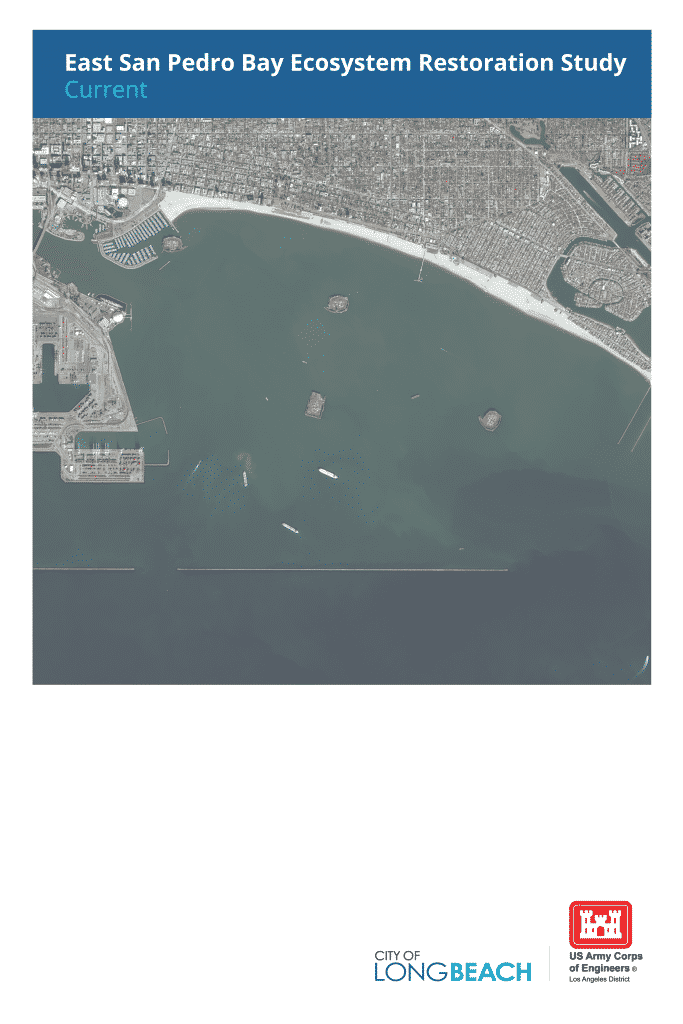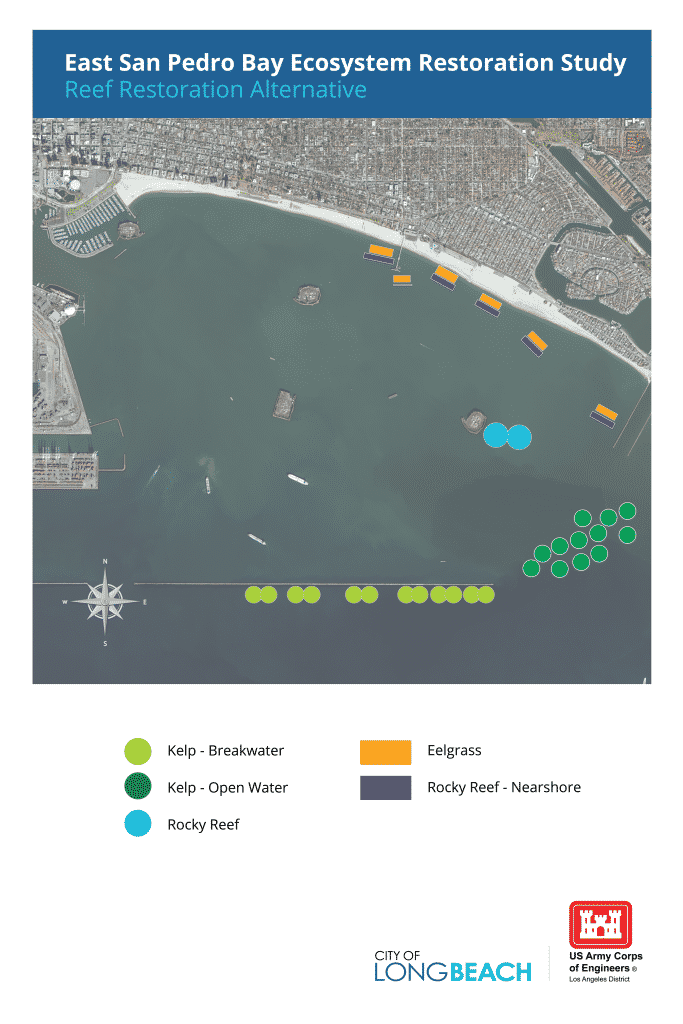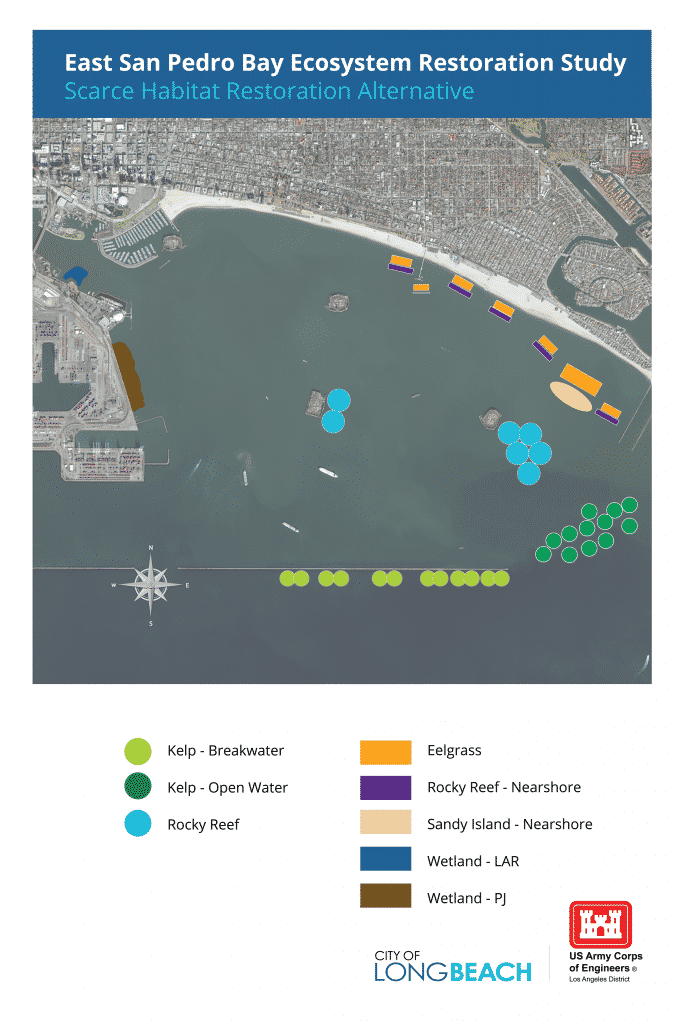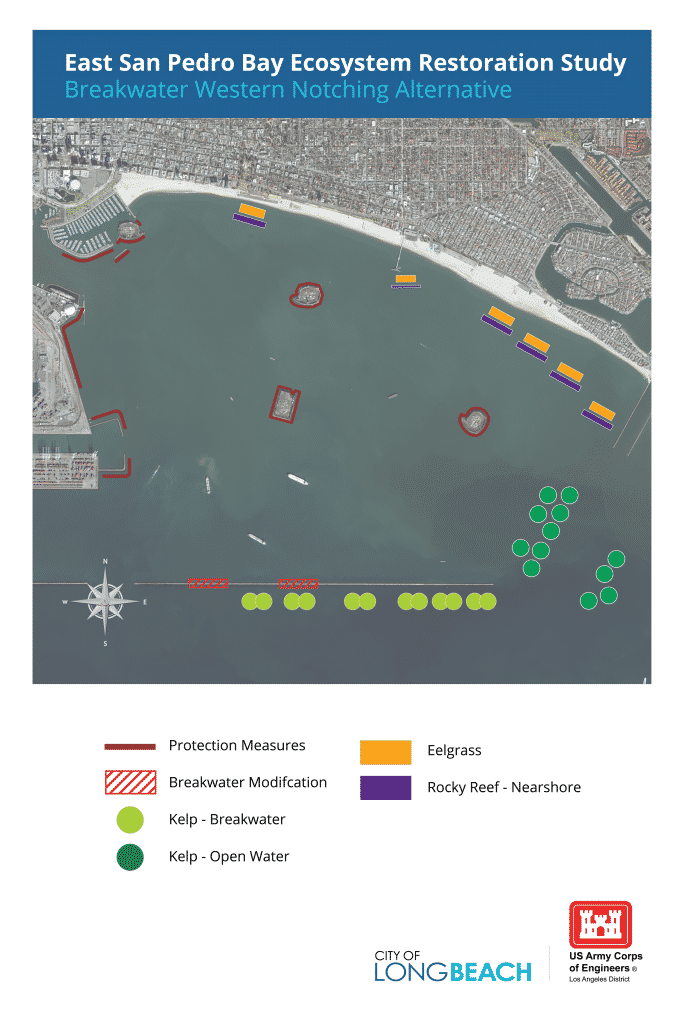The city on Monday unveiled six possible options to improve the ecosystem along the coast, of which two would include removing parts of the breakwater and restoring waves to Long Beach’s coastline.
Developed by the U.S. Army Corps of Engineers in collaboration with the city and other partners, the much-anticipated East San Pedro Bay Ecosystem Restoration Study provides six options to restore and improve the coast.
While local surf advocates have long pushed to tear down the 2.2-mile breakwater, officials on Monday said removing the entire wall “would not be feasible.” The study is still in its early stages and does not include cost estimates.
“I am encouraged to see a range of alternatives that will achieve ecosystem restoration, including two that include breakwater reconfiguration,” Mayor Robert Garcia said Monday. “Science will drive the outcome of the study, but we are committed to the protection of property and infrastructure.”

In addition to modifying the breakwater, the six draft alternatives include options such as adding physical structures, oyster beds, a sandbar, rocky reefs, wetlands and kelp beds to the bay.
David Van Dorpe, deputy district engineer with the Corps’ Los Angeles District, said the study, commissioned in 2016, shows the different opportunities to restore degraded ocean habitat.
The project will now move on to environmental review process, where all six alternatives will be analyzed for their environmental impact.
The first option, called the base option, is to leave the area as is:

The second option provides restoration of kelp beds, eel grass and rocky reefs. It would be the least costly, aside from leaving the area as is:

The third option, a reef restoration alternative, would add rocky reefs to support habitat biodiversity:

Option four is much larger and would build on the kelp and reef restoration with other features, including a 24-acre sandy island near the Peninsula and two coastal wetlands. That would include a 10-acre wetland near the Los Angeles River and a 42-acre wetland just outside the Port of Long Beach. The project also would include a small oyster bed near the Alamitos Bay jetties. Mayor Robert Garcia call this option a “pretty exciting alternative.”

Option five would include all the eco restoration measures and would add two, 1,000-foot notches along the western potion of the breakwater. This would result in increased swells that could impact oil islands, Pier J and the Carnival Cruise terminal, but stones removed from the breakwater could be used to build barriers:

The final option would include removing 24 acres of the existing breakwater. Preliminary wave modeling shows that this would have significant impact on the oil islands, Belmont Pier and even Naval activities in Seal Beach, but the stones removed from the breakwater could be used for barriers. The plan would include higher, rocky reefs to protect the Peninsula. This is the largest and mostly costly option, but it’s something that “needs to be explored,” Garcia said.

The draft alternatives and an update on the study will be presented at a community meeting at 5:30 p.m., Oct. 10 at the Bixby Park Community Center, 130 Cherry Ave.
The city is asking for public comment as the study moves into the environmental review process. The study is expected to be completed early next year.
Visit here for For more information.
Contact the writer at [email protected]

